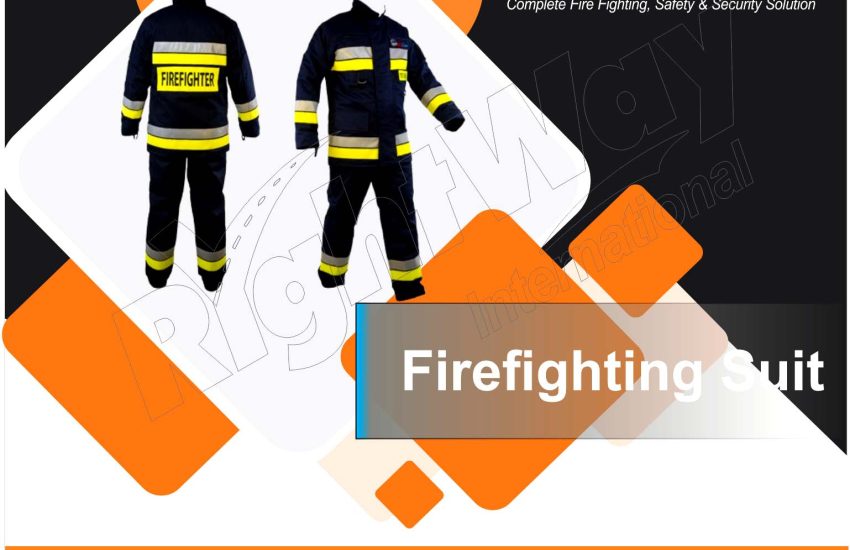Firefighting suits are critical pieces of personal protective equipment (PPE) designed to shield firefighters from the intense heat, flames, and hazardous materials encountered during fire suppression and rescue operations. These suits are engineered to provide thermal protection, durability, and comfort, ensuring that firefighters can perform their duties safely and effectively. This article explores the key features of firefighting suits, their types, and best practices for their use and maintenance.
The Importance of Firefighting Suits
Firefighting suits are indispensable for several reasons:
- Thermal Protection: They protect firefighters from extreme temperatures and radiant heat, which can reach several hundred degrees Fahrenheit during a fire. This protection helps prevent burns and heat-related injuries.
- Physical Protection: Firefighting suits are designed to be durable and resistant to abrasion, cuts, and impacts, protecting firefighters from falling debris and sharp objects.
- Chemical Resistance: Many firefighting suits are treated to resist chemicals, oils, and other hazardous substances that may be present in smoke or fire.
- Visibility: Firefighting suits are equipped with reflective strips to enhance visibility in smoky or dark environments, which is crucial for both safety and coordination.
- Comfort and Mobility: Modern firefighting suits are designed with ergonomics in mind, allowing for ease of movement and flexibility while ensuring that protective features are not compromised.
Key Features of Firefighting Suits
- Outer Shell:
- Description: The outer shell is typically made from flame-resistant materials such as Nomex, Kevlar, or PBI. It provides the first line of defense against heat and flames.
- Benefits: Durable and capable of withstanding high temperatures, protecting against burns and exposure.
- Moisture Barrier:
- Description: This layer is designed to prevent water and other liquids from penetrating the suit, keeping firefighters dry and comfortable.
- Benefits: Ensures that firefighters stay dry in wet conditions and prevents the risk of steam burns.
- Thermal Barrier:
- Description: The thermal barrier provides insulation against heat and maintains a safe temperature inside the suit.
- Benefits: Protects firefighters from extreme temperatures and helps regulate body temperature.
- Lining:
- Description: The inner lining is designed for comfort and may include moisture-wicking and antimicrobial properties.
- Benefits: Enhances comfort by managing sweat and reducing odor.
- Reflective Trim:
- Description: Reflective strips or trim are sewn into the suit to improve visibility in low-light or smoky conditions.
- Benefits: Enhances safety by making firefighters more visible to their team and others.
- Hood and Gloves:
- Description: Firefighting suits often include a hood that covers the head and neck, and gloves that provide additional protection.
- Benefits: Provides comprehensive protection for all exposed areas, including the head, neck, and hands.
Types of Firefighting Suits
- Structural Firefighting Suits:
- Description: Designed for interior fire fighting and rescue operations, these suits offer protection against high heat and flames.
- Benefits: High level of thermal protection, durability, and resistance to chemicals and abrasions.
- Wildland Firefighting Suits:
- Description: Lighter and more flexible than structural suits, these are used for fighting fires in outdoor, brush, and forest environments.
- Benefits: Breathable and lightweight, providing comfort and protection against heat and embers.
- Proximity Suits:
- Description: Used for firefighting and rescue operations in extreme heat environments, such as those encountered in aircraft fires.
- Benefits: Provides enhanced protection against intense radiant heat and flames.
- Hazmat Suits:
- Description: Specialized suits designed for incidents involving hazardous materials and chemicals.
- Benefits: Offers protection against chemical and biological hazards in addition to heat and flames.
Best Practices for Firefighting Suit Use and Maintenance
- Proper Fit: Ensure that suits are properly fitted to allow for ease of movement while providing adequate protection. Ill-fitting suits can compromise safety and comfort.
- Regular Inspections: Inspect suits regularly for signs of wear and tear, such as holes, tears, or damaged reflective trim. Replace or repair any compromised areas promptly.
- Thorough Cleaning: Follow manufacturer instructions for cleaning and decontaminating suits. Proper cleaning helps maintain suit performance and extends its lifespan.
- Storage: Store suits in a clean, dry environment away from direct sunlight and chemicals. Proper storage helps prevent degradation of the suit materials.
- Training: Ensure that firefighters are trained in the proper use and maintenance of their suits, including donning and doffing procedures, to maximize safety and effectiveness.
Conclusion
Firefighting suits are essential for the safety and effectiveness of firefighters, providing critical protection against heat, flames, and hazardous materials. By understanding the key features of these suits, the different types available, and best practices for their use and maintenance, organizations can ensure that their firefighters are well-protected and able to perform their duties with confidence. Investing in high-quality firefighting suits and adhering to proper care protocols not only enhances safety but also supports the overall effectiveness of fire and rescue operations.


